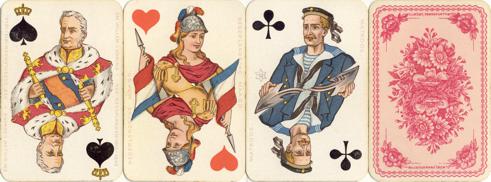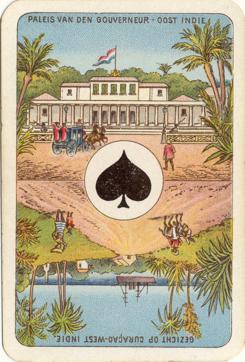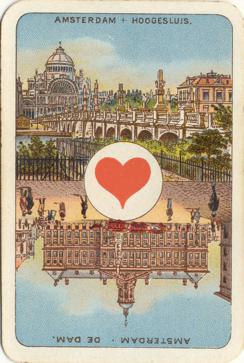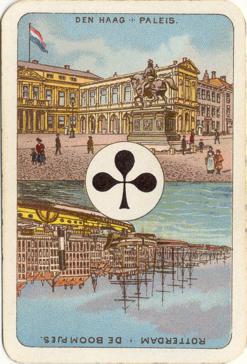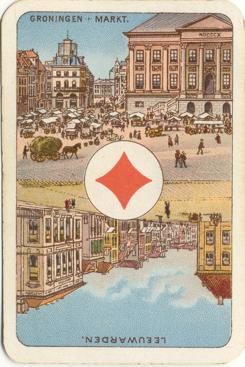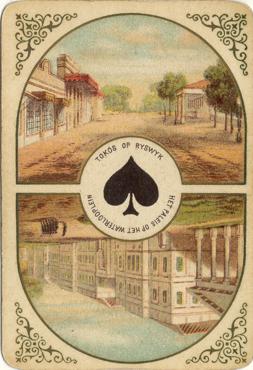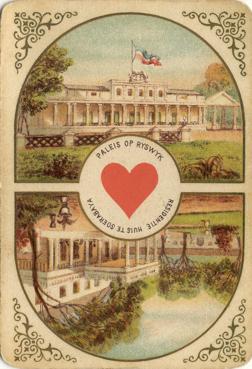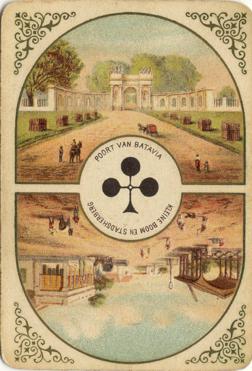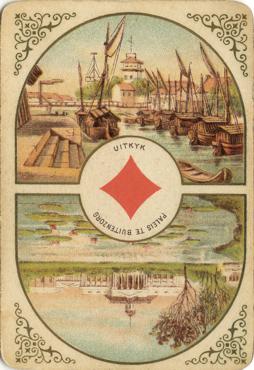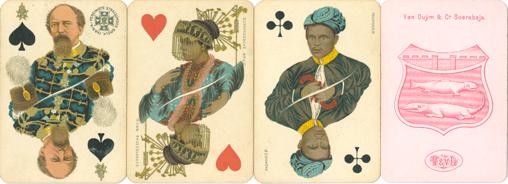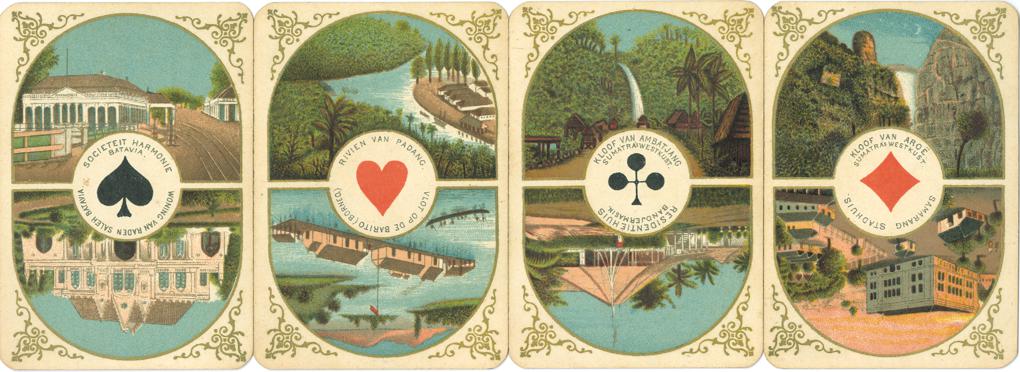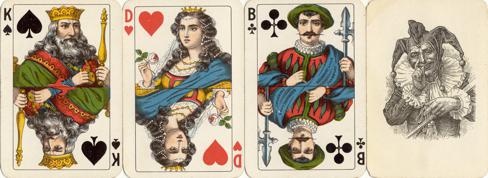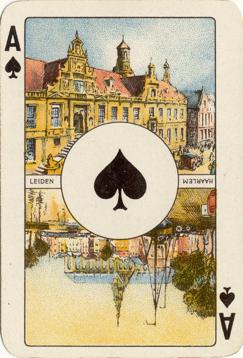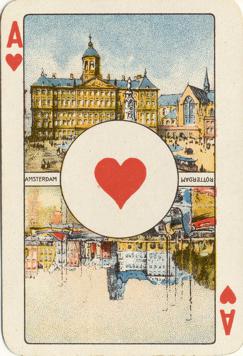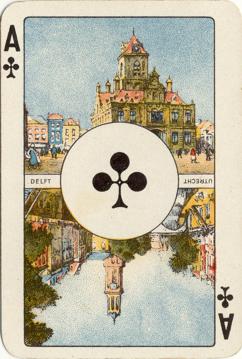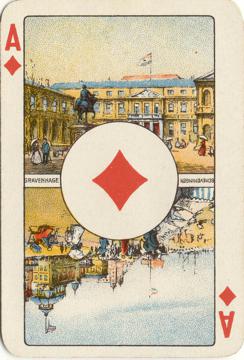|
Bernard Dondorf
from Frankfurt printed the "Java Speelkaarten" for the first time in
1874. It was published to commemorate the 25th year of the
reign of King William III. The Dondorf logo and name are printed on the
Jack of Clubs. The courts show Dutch royalty and military men. This deck
is from the second edition in 1879, with Queen Emma as the Queen of
Hearts. Her predecessor, Queen Sofia, had died in 1877. The deck was commissioned by the company of Gumprich &
Strauss from Batavia (now Djakarta) in the Dutch East Indies and it was
accompanied by a set of aces with views of sites or towns from the East
Indies, some with typical Dutch names like Rijswijk, Uitkijk, Buitenzorg
or Waterlooplein. |
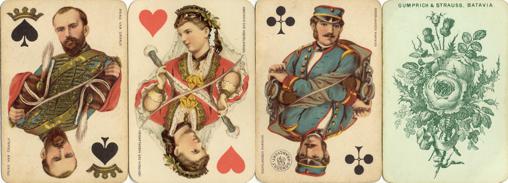
|
